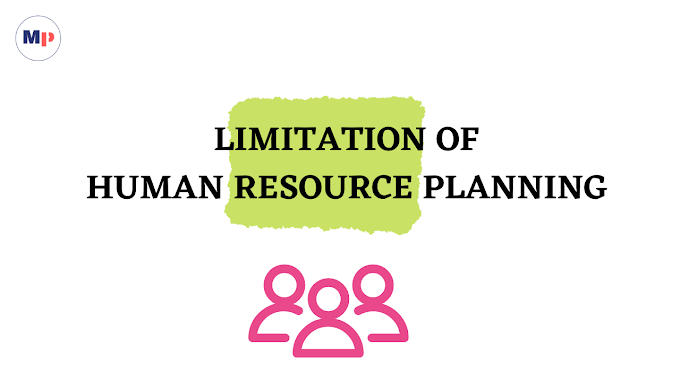ORIGIN AND DEVELOPMENT
In the modern period, numbers play an important role in the all-round development of human knowledge, science and society in general. Usually, man attains knowledge in almost every sphere of life through numbers and by the help of numerical methods, takes many important decisions. It is on the basis of numbers only that knowledge and information become certain and meaningful.
The
word 'Statistics' is derived from the German language word 'Statistik' and Latin
language word 'Status' which means State or Government. 'Statistics' word was
firstly used by 'Gottfried Achenwall'
a famous mathematician of Germany who is also known as "Father of Statistics". On this basis we can say that
statistics has its origin as "Science of Kings' In early times, the rulers
conducted time to time surveys in their kingdom and these surveys were mostly
related to people, money and military power. Before 3050 B.C. Egyptian kings
had collected the data for the building of world-famous pyramids.
With
the passage of time, statistics have been used in different spheres of life and
has become an inseparable part of human civilization.
MEANING OF STATISTICS
Statistics'
can be used in two senses;
- 1. Singular
- 2. Plural
Long
time back when statistics had not been developed to the fullest extent than it
was used in plural sense i.e. in form of data but as it has developed, it is
used in singular sense i.e. as 'Science of Statistics'
1) Statistics plural i.e. numerical facts collected from individual units in form of data.
2) Statistics singular i.e. collection, analysis and interpretation of data scientifically.
DEFINITION OF STATISTICS
"Statistics are numerical
statement of facts in any department of enquiry, placed in relation to each
other.”
A.L. Bowley
"Statistics are the classified
facts representing the condition of the people in a State specifically those
facts, which can be stated in numbers or in table of numbers or in any tabular
or classified arrangement.”
Webster
"By Statistics we mean
quantitative data affected to a marked extent by multiplicity of causes."
Yule and Kendall
CHARACTERISTICS OF STATISTICS
1. Statistics are aggregate of facts: Any isolated figure related to fact or problem cannot become
statistics because from it any conclusion can't be derived.
For example - A single figure '150' is useless but whenever we have
figures relating to different years about the population, they are more useful
because they are comparable and the conclusion can be derived from those
figures. Hence, it would not be unjust to say that various figures related to
aggregates of facts can be called statistics.
2. Statistics are numerically expressed: We can express the facts either quantitatively, for
example-height 1.5m, 1.8m, 1.4 etc. or qualitatively, for example, tall, short,
very short etc. A quantitative expression is in the purview of statistics but
qualitative are outside its purview as we cannot deduce a certain result from
qualitative figures.
3. Statistics are affected by multiplicity of causes: Statistics are affected by various
causes for example- data of rate of interest is affected by the policy of Central
Bank, the tendency of depositors, the scope of investment, the marginal efficiency of
capital, etc.
4. Statistics are enumerated or estimated: Statistical data is either enumerated or estimated.
Both methods are acceptable. If the field of investigation is a limited and a higher degree of accuracy is needed, we should adopt for enumeration and
vice-versa.
5. There should be a reasonable standard of accuracy: The data collected should be as
accurate as possible as, higher the accuracy, the conclusions derived, are more
reliable and vice versa.
6. Statistics are collected for a pre-determined purpose: Data should be collected for a
pre-determined purpose as without specific and predetermined purpose
maintenance of accuracy is very difficult.
7. Statistics should be collected in a systematic manner: For collection of data proper
planning should be done in relation to work, field, time and accuracy otherwise
we cannot call the collected figures as data.
8. Statistics should be placed in relation to each other: Data should be placed in relation to
each other so that their comparison is possible. In other words, we can say only
homogeneous data is comparable. If heterogeneous data is taken, it is very
difficult to compare them or to draw any conclusions from them.
SCOPE OF STATISTICS
In
older times the scope of statistics was very limited originally, it was
developed as "Science of kings". But in modern times it covers the unlimited area in the various sections of human civilization. In reality in
every science, the statistical methods are used in abundance. We can say "Science without statistics bears no
fruit and statistics without science have no root.”
Statistics
can be divided into two parts:
a. Statistical Methods
b. Applied Statistics
Statistical Methods
Statistical
methods are the procedures used in the collection, organisation, summary,
analysis, interpretation and presentation of data.' We can compare statistical
methods with the various methods which are used in producing goods.
Statistical methods are grouped into the following four categories:
Collection: By this method data is collected and
edited according to the purpose of investigation.
Presentation: It is very important to properly
present the collected data in form of tables, graphs, pictures etc., after
proper classification of the data in various categories.
iii. Analysis: The collected data is analyzed
through measures of dispersion, central tendency, skewness, correlation, index
number, analysis of time series, interpolation and extrapolation etc.
i Interpretation: This means to draw a conclusion on the
basis of the analysis of data and then take the decision. This step should be
taken carefully and by qualified personnel.
Applied Statistics
Under applied statistics various problems based on the statistical methods are used to solve the various problem based on real facts. "The applied statistician puts statistical methods into practice in a particular subject matter. Statistical methods give the generally accepted formulas and law and when those laws are applied in relation to real facts, we get real data.
For example-
data related to population, national income, industrial production, wages etc. Applied data relates to economics, commerce, social science, administration, biology
and other science that's why for applied statistics we should have general
knowledge with the knowledge of statistical methods.
Applied statistics can be divided into the following two categories:
Descriptive Applied Statistics: In this, past and present data related to any field is studied for the purpose of giving descriptive information.
F For example- price index and population data come under the purview of descriptive applied statistics because they provide with the present
and past information of data.
Scientific Applied Statistics: Under this statistical methods are
used to confirm the scientific law, already formulated. For example; with the
help of scientific applied statistics, a person in the field of commerce, can
confirm the business cycle and get it generally accepted.
FUNCTIONS OF STATISTICS
Now
a day's statistics is being used in every sphere of human life. There is hardly
any field or sphere which is untouched by statistics. The main functions of the statistics are as follows:
1) Expression of Facts Numerically: The main work of statistics is to express the various facts
in the numerical terms. Just saying this that our national income is less or the population is very much, is meaningless until and unless these two statements
are expressed numerically. It is only through the numerical expression of
facts, one can compare between the two series, facts, quality, quantity, years
etc.
2) Simplification of Complexities: The numerical statements which are very complex in nature, are not understandable easily by the common man. By applying various techniques of statistics like classification, tabulation, comparison, and co-efficient of correlation, these complexities are changed into simplicities to be easily understood by a common man.
For example- Numbers obtained by
two thousand students studying in two colleges are not helpful in drawing of
any conclusion until and unless a separate result-sheet is prepared for each
college. In reality, through statistics, this complex data is changed into
simple and representative form.
3) Comparison and correlation: Once the data is simplified, it has to be compared with the other data and a degree of correlation is also studied between two.
For example- If we say that per
capita income in India is Rs. 450 per annum or the average age of an Indian is
30 years then these statements are only information. But if we also know that
the per capita income in Pakistan is Rs. 350 and the average age of a Pakistani is
27 years. Then by comparing the two nations we can draw a conclusion that India
is more developed than Pakistan and the living conditions are also better in
India than Pakistan. Through the method of comparison, statistics is serving
mankind to a great extent.
4) Formulation of proper Policy: After comparing and calculating correlation the work of
deriving conclusions become easy and on the basis of that the desired policies
can be formulated. In the current financial year what should be the
export-import policy, how much food-grains should be imported, what should be
the policy of Reserve Bank of India to control inflation, what should be the
cash reserve ratio etc. are the questions, the answer of which can be obtained
through policies formulated on the basis of scientific analysis of the data.
5) Estimation of Future Phenomena: ln addition to the analysis of the present economical facts
there are two important techniques of statistics--interpolation and
extrapolation, through the help of which we can estimate about the future. In the reality, our economic development and other policies depend mainly on
statistical techniques.
6) A Test to the Scientific Laws: In all social science, the various laws are formulated on
the basis of Deduction Method, but the main defect of these laws are that in
real-life at the individual level they have many exceptions. Statistical
science formulate the laws on Inductive Method which are more practical and
scientific. The various laws in different fields such as, in economics, a quantitative theory of money, Malthusian theory of population, Angle's theory
of the formation of the family budget together with, physics, biology, zoology
etc. are formed and can be tested and their laws confirmed with the help of
statistical data.
7) Enhancement of Individual Knowledge and Experience: The main function of statistics is
to enhances the individual's knowledge at a logical and intellectual level and
experience. Through it a person's ideas become more clear various problems are
solved through social surveys and statistical techniques and this increase's
the person's knowledge and capacity to take more scientific decisions which are
easily acceptable by others.
8) Proper Realization of Magnitudes: Through the use of data, various explanations become more
acceptable and clear. By this, the importance and magnitude of the problem are also
realized.
For example- if we say that our The fifth plan is much larger as compared to the first one, we cannot comment
on the situation, But if we say that our First plan is of Rs. 2000 crore and The fifth plan is of Rs. 1988 crores then we can easily realize their magnitude and
importance.





